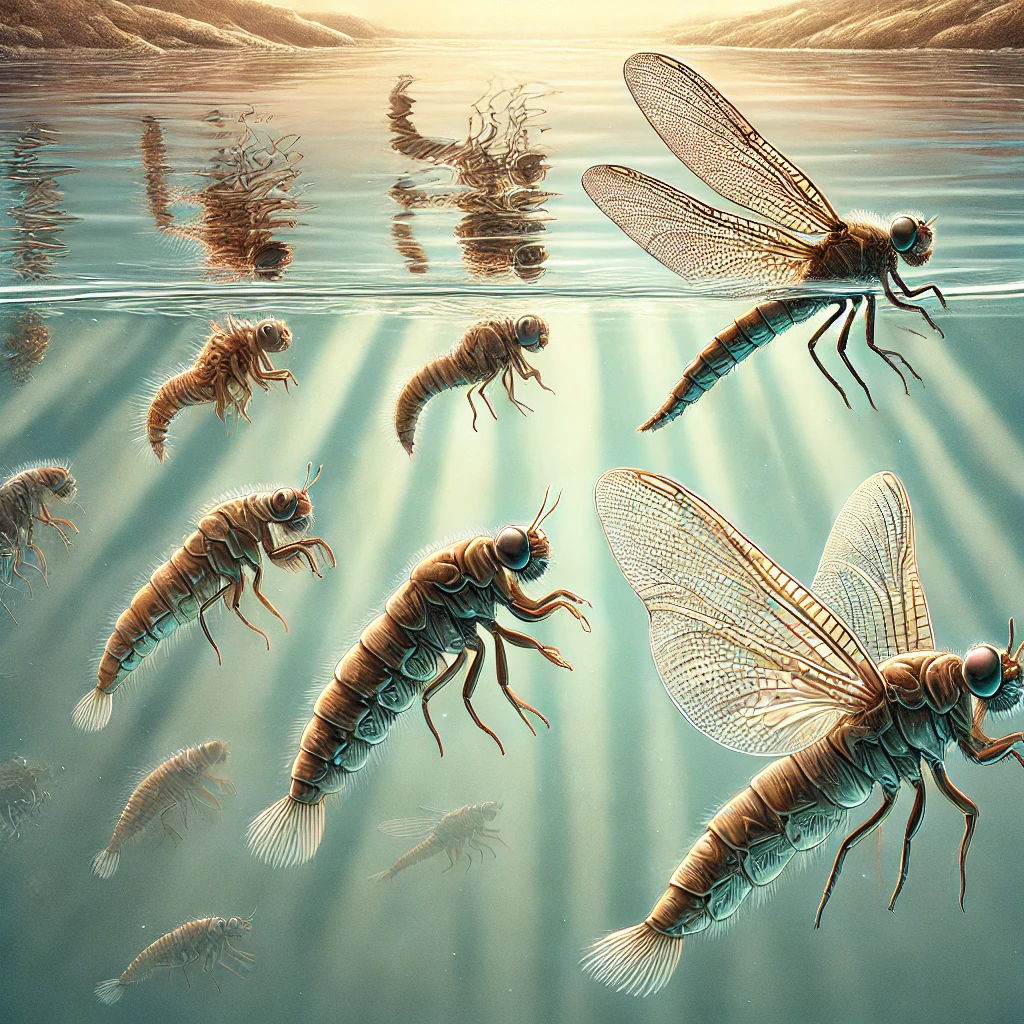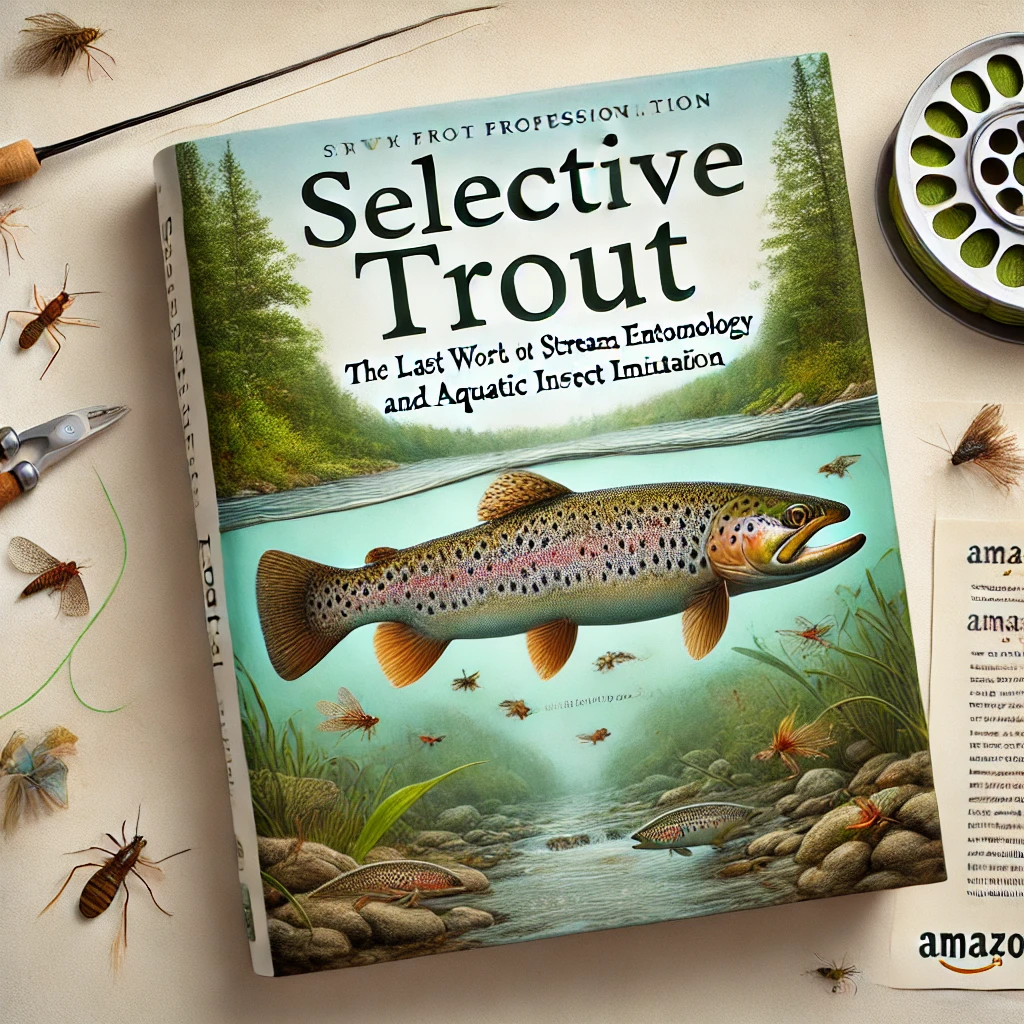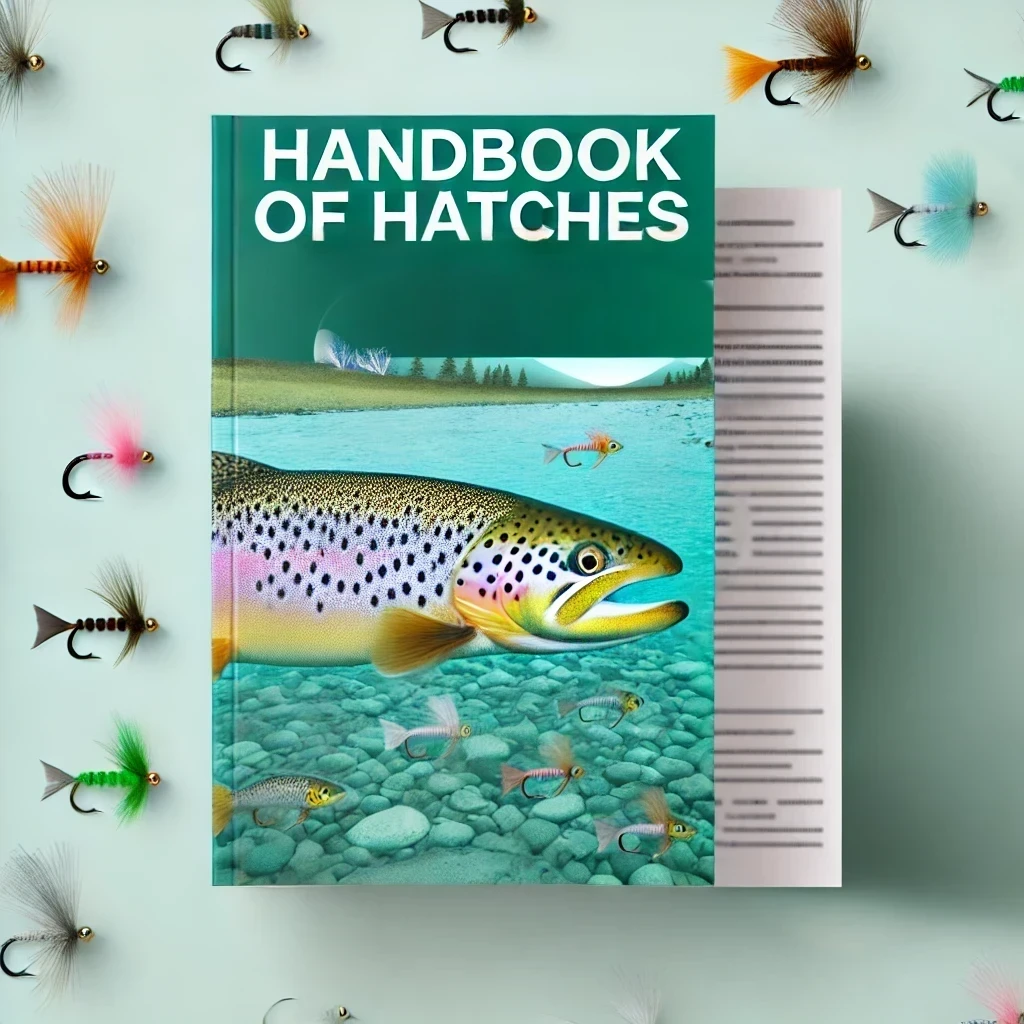What is a Hatch?
In fly fishing, a hatch is when aquatic insects emerge from the water as adults. This can also be called an emergence, swarming, eruption, bloom, outbreak, or unfolding.
Table of Content
Expanded Explanation
Understanding Hatches: The Aquatic Insect Lifecycle Unveiled

Many aquatic insects, including mayflies, caddisflies, and stoneflies, live underwater in their nymph or pupae stages, often for a year or more.
The transition from nymph to adult, known as a hatch, involves the insects rising to the water’s surface, shedding their exoskeleton, and emerging as winged adults.
Once airborne, these insects play a crucial role in the ecosystem, providing a food source for fish and birds.
Hatches: A Fly Fisher’s Prime Time for Success
This process, which can happen synchronously across many species, creates a feast for fish, who eagerly await the opportunity to snap up these easy meals. An emergence represents a golden opportunity for fly fishers to mimic these emerging insects with precise fly patterns, leading to some of the most rewarding fishing moments. It’s a time when rivers and streams come alive, both with the flurry of hatching insects and the active feeding of fish, making it a peak period for angling success.
Different Types of Hatches
There are many types of hatches, each with unique characteristics. Here are a few examples:
- Mayfly Hatch: Mayflies are one of the most common insects that emerge. They are delicate insects with large wings. This can also be called a mayfly emergence, swarming, eruption, or bloom.
- Caddis Hatch: Caddisflies are another important insect for fly fishers. They are stouter than mayflies and have hairy bodies. This can also be called a caddisfly emergence, swarming, eruption, or bloom.
- Midge Hatch: Midges are tiny insects that can be difficult to see. However, they are a valuable food source for fish. This can also be called a midge emergence, swarming, eruption, or bloom.
Importance
Understanding hatches is essential for fly fishing success. Knowing what insects are hatching and how they behave, you can choose the right fly and presentation to catch fish.
Hatch Context and Usage
Fly fishers use the term in many different contexts. For example, you might hear someone say, “There’s a big mayfly hatch going on!” or “I need to tie some flies to match the caddis hatch.” They also say there’s a mayfly emergence, swarming, eruption, or bloom, or a caddisfly emergence, swarming, eruption, or bloom.
Here’s a breakdown to highlight the different contexts in which fly anglers use the term:
- Mayfly Hatch: Refers to a period when mayflies transition from nymphs to adults, becoming highly active and available as fish food.
- Caddis Hatch: Indicates a time when caddisflies emerge from their pupal stages, signalling a prime fishing opportunity with specific fly patterns.
Different terms related to a hatch explaining insect activity:
- Emergence: The initial rise of nymphs to the water’s surface, preparing to transform into adult insects.
- Swarming: Adult insects flying in large numbers, often part of the mating process.
- Eruption: A sudden increase in insect activity, which can signal the start of a significant hatch.
- Bloom: A widespread presence of a particular insect species in an area, noticeable by the large numbers on and above the water.
Each term provides insights into the lifecycle and behaviour of aquatic insects, guiding fly fishers in choosing the right flies and fishing strategies to mimic these natural processes and increase their catch rate.
Examples
- Example 1: You’re fishing a stream and see hundreds of insects flying around with large wings. This is a sign that there is a mayfly hatch in progress.
- Example 2: You see a fish rising to the surface and taking insects off the top of the water. This could be a sign that midges are emerging.
Understanding the Glossary Term
Some people confuse hatches with insects spawning. Spawning is when fish reproduce. On the other hand, hatches are when aquatic insects transform from underwater nymphs or pupae into adult flying insects.
Related Glossary Terms
Nymph
Exploring the Nymph Stage: A Journey of Growth and Transformation in Aquatic Insects
The nymph stage is pivotal in many aquatic insects’ lifecycles. This phase is marked by significant growth and developmental milestones under the water’s surface. During this time, insects such as mayflies, caddisflies, and stoneflies make their homes on the riverbed or amidst aquatic vegetation. Here, they embark on a journey of transformation, undergoing several moults. This process involves shedding their exoskeletons to accommodate their growing bodies.
Nymphs: Mirroring Adults with Aquatic Adaptations
Interestingly, nymphs often resemble their adult counterparts in appearance and behaviour. However, they are distinguished by the absence of wings. Instead, they are equipped with adaptations suited to an aquatic lifestyle, including gills that enable them to breathe underwater.
Mastering the Art of Nymph Fly Patterns: How Anglers Mimic Underwater Life
Fly fishers invest time and effort in closely examining nymph characteristics and behaviours. This meticulous study aids them in crafting nymph fly patterns that mimic these underwater dwellers with remarkable accuracy. Such an approach significantly enhances the chances of attracting fish, making the flies irresistible to their aquatic prey.
The Key to Successful Fly Fishing: Mastering Nymphing Techniques
Understanding the intricacies of the nymph stage is crucial for anglers. It empowers them to select and present their flies in a way that mirrors the natural diet of target fish species. Therefore, mastering the nymphing technique is essential for anyone aiming to excel in fly fishing.
Here’s a hatch breakdown of the key points:
- Critical Role of the Nymph Stage: A crucial period for growth and development in aquatic insects.
- Habitat: Nymphs thrive on the riverbed or within aquatic vegetation.
- Transformation Process: Involves several moults, allowing growth by shedding their exoskeleton.
- Mimicry and Adaptations: While nymphs mimic adult forms, they are adapted to underwater life, notably lacking wings but having gills.
- Importance to Fly Fishers: Anglers study nymphs to create effective fly patterns that imitate these creatures, improving fishing success.
- Technique and Success: Knowledge of nymph characteristics and behaviour helps anglers present flies that closely resemble the natural prey, a cornerstone of successful fly fishing.
In conclusion, the nymph stage transcends mere transformation for aquatic insects; it’s key to fly fishing success. This phase influences outcomes through the angler’s understanding and mimicry of these creatures. For a comprehensive exploration of this stage and its impact on the art of fly fishing, visit What is a Nymph | Discover Fly Fishing Magic for more details.
Hatch Metamorphosis: A Time of Dramatic Change
The transition from nymph to pupa, especially in aquatic insects, is a fascinating process that highlights the adaptability and diversity of insect lifecycles. It involves a change in habitat from aquatic to terrestrial (in many cases) and a complete reorganization of the organism’s body and physiology to prepare for adult life.
Pupa
The pupa stage is a pivotal moment in the life of an insect. This phase follows the nymph stage and precedes adulthood. At this juncture, insects experience an extraordinary transformation known as metamorphosis. Here’s how this fascinating process unfolds:
- Encasement: Initially, insects wrap themselves in a pupal casing. This casing serves as a protective layer.
- Transformation Begins: Safely enclosed, the insect starts its transformation. Inside, a dramatic reorganization of its body takes place.
- Development of New Features: Key adult features like wings begin to develop. This is especially true for species destined to take flight in adult form.
- Duration of the Pupa Stage: The length of this stage can vary significantly. It is influenced by the specific type of insect and the surrounding environmental conditions.
- A Period of Inactivity: During this stage, insects remain inactive. They stay hidden, which helps protect them from potential predators.
- Emergence: Upon completion of metamorphosis, the fully formed adult insect emerges from its pupal case. It is now ready to embark on its adult life.
Pupa Stage: A Survival Strategy Beyond Transformation
Interestingly, this stage is not just a time of physical transformation. It is also a crucial survival strategy. By remaining inactive and hidden, the insect minimizes the risk of predation. Furthermore, the emergence of the adult at the right time ensures that it is perfectly adapted to its environment.
Conclusion: The Pupa Stage – A Gateway to Adulthood and Adaptability
In conclusion, the pupa stage is crucial and fascinating in an insect’s life. It’s a period of significant changes, ending with the adult insect’s appearance. This stage highlights insects’ fantastic adaptability and resilience, readying them for adult challenges. For more insights, visit Pupa | Unlock Fly Fishing Essential Insights and Strategies.
Reading Hatch Aids
Selective Trout: The Last Word on Stream Entomology and Aquatic Insect Imitation
- Comprehensive guide on stream entomology and aquatic insect imitation
- Essential for mastering fly fishing techniques
- Focuses on matching the hatch for better trout fishing success
- Explains the behavior and life cycles of aquatic insects
- Suitable for both beginner and experienced anglers
- Offers expert insights into fly selection and presentation
- Written by leading authorities in the field of fly fishing
Handbook of Hatches: Introductory Guide to the Foods Trout Eat & the Most Effective Flies to Match Them
- Comprehensive guide to understanding trout food sources and effective fly matches
- Covers various aquatic insect life cycles and their impact on fishing success
- Step-by-step instructions on identifying key hatches in streams
- Helps anglers choose the best flies for each stage of insect development
- Written by an expert in fly fishing, making it an invaluable resource for mastering hatches
External Resources
Discover the secrets of trout stream insects with “The Bug Book: A Fly Fisher’s Guide,” a comprehensive resource for identifying and matching the hatch. Enhance your fly fishing strategy by understanding the behaviors and patterns of stream insects.
“The Orvis Streamside Guide to Trout Foods and Their Imitations“ equips anglers with the knowledge to identify trout foods and select the perfect fly imitations. This guide is essential for mastering the art of matching the hatch for successful fly fishing.
Hatch Related Articles
What is a Fly Fishing Hatch Guide?: Explore the essence of fly fishing with “What is a Fly Fishing Hatch Guide,” your comprehensive introduction to understanding aquatic insect hatches and their significance in fly fishing. This guide demystifies leveraging emerging insect knowledge for more effective fly selection and fishing strategies.
Fly Size Chart | How To Know What Flies To Use For Trout: Dive into our Fly Size Chart to master selecting the perfect fly for catching trout, tailored to various fishing conditions and habitats. This essential guide simplifies fly choice, boosting your fly fishing success with strategic insights.

